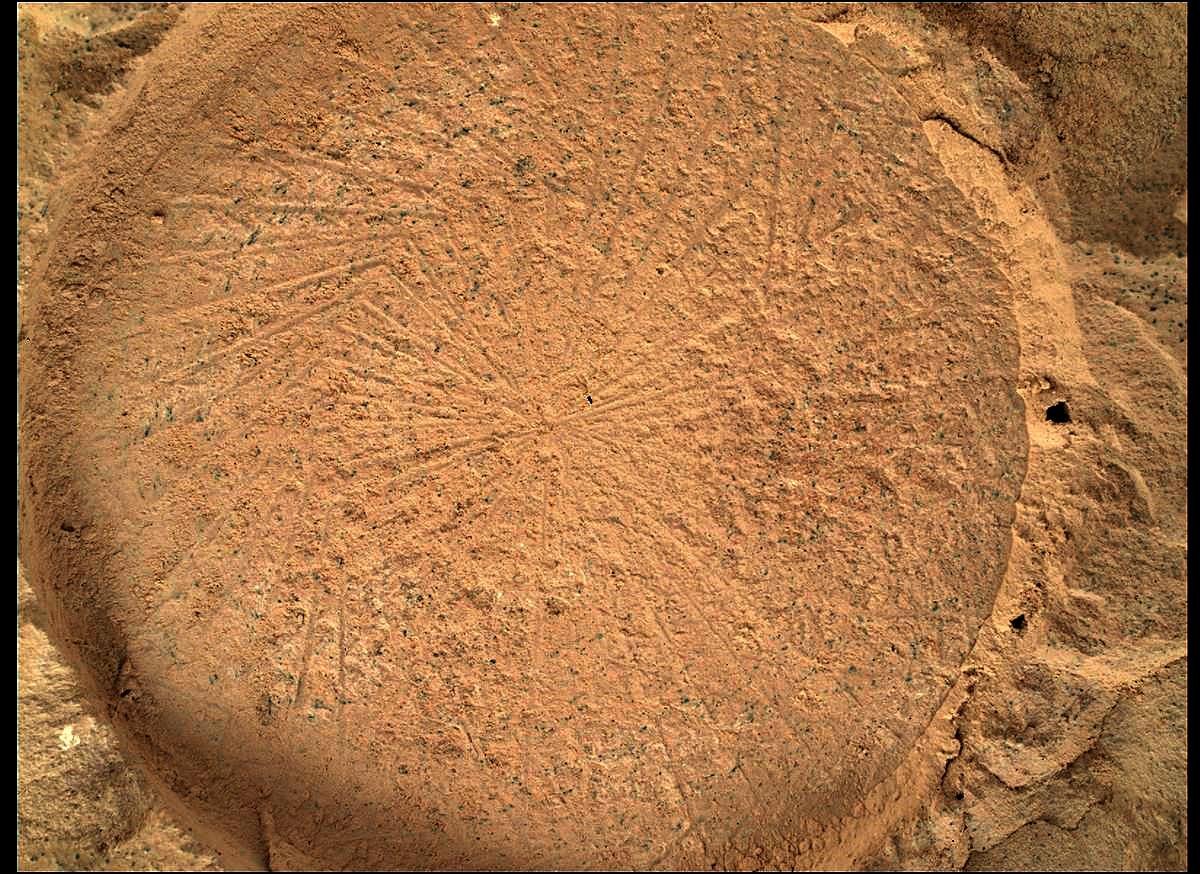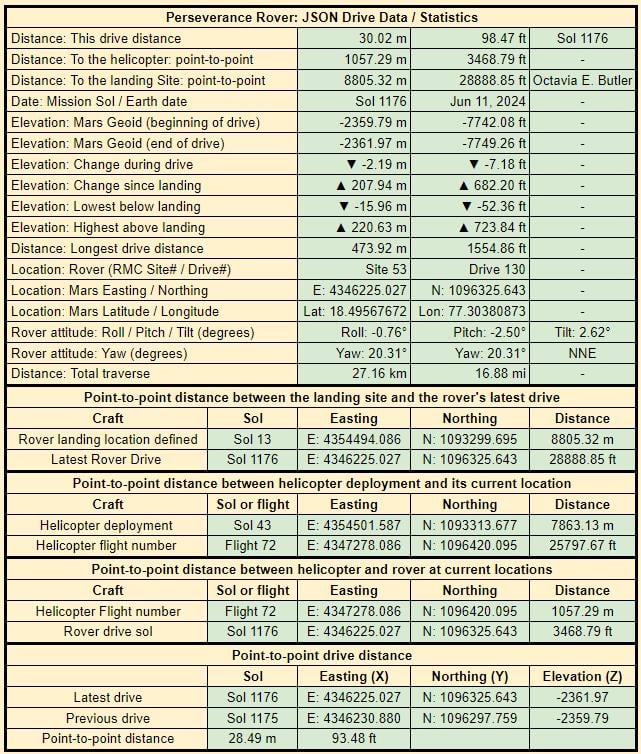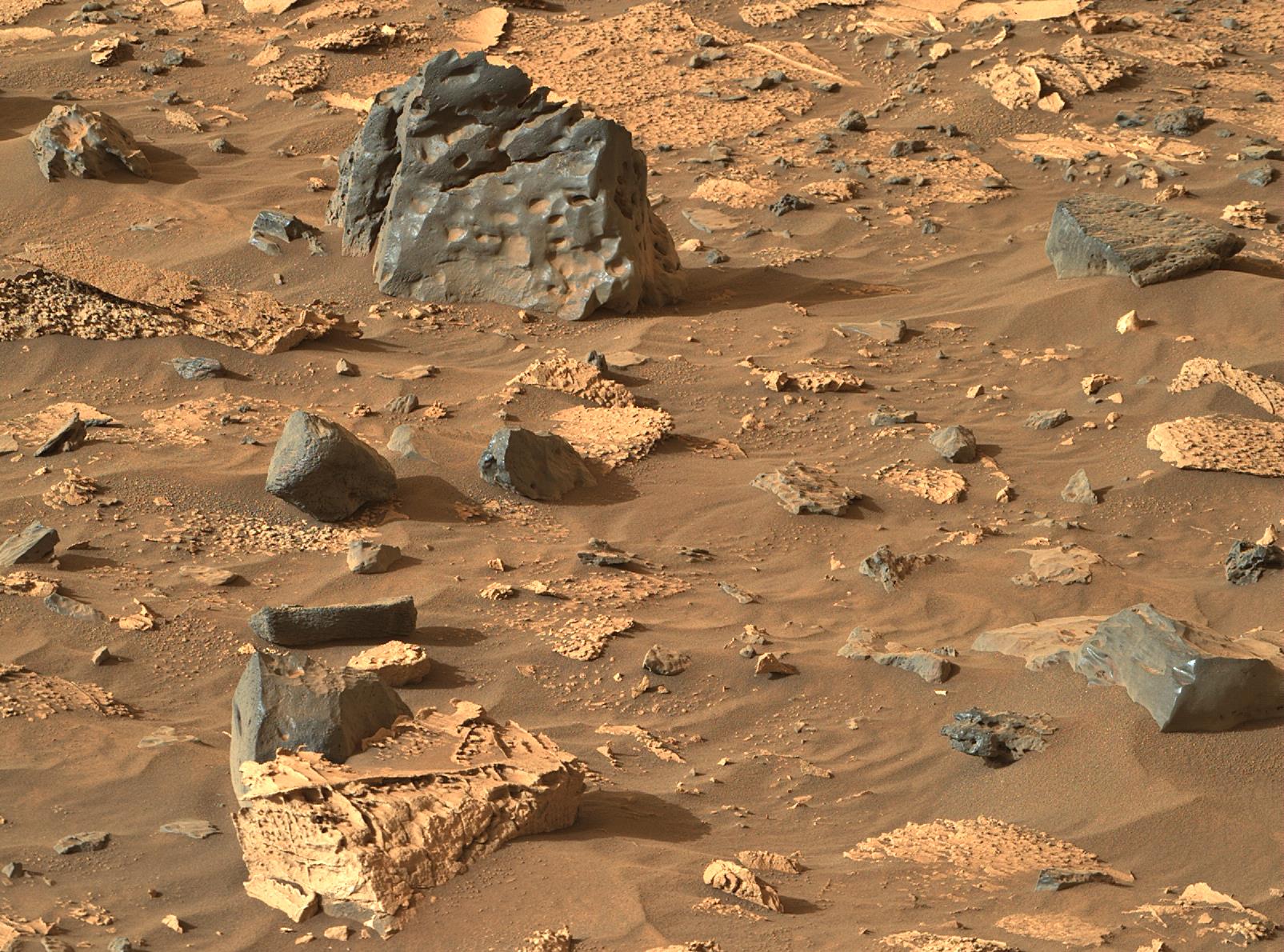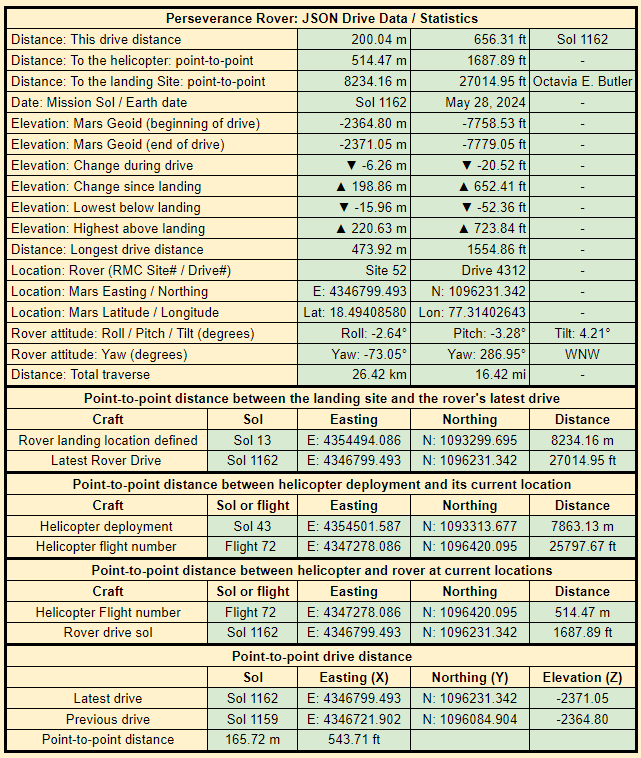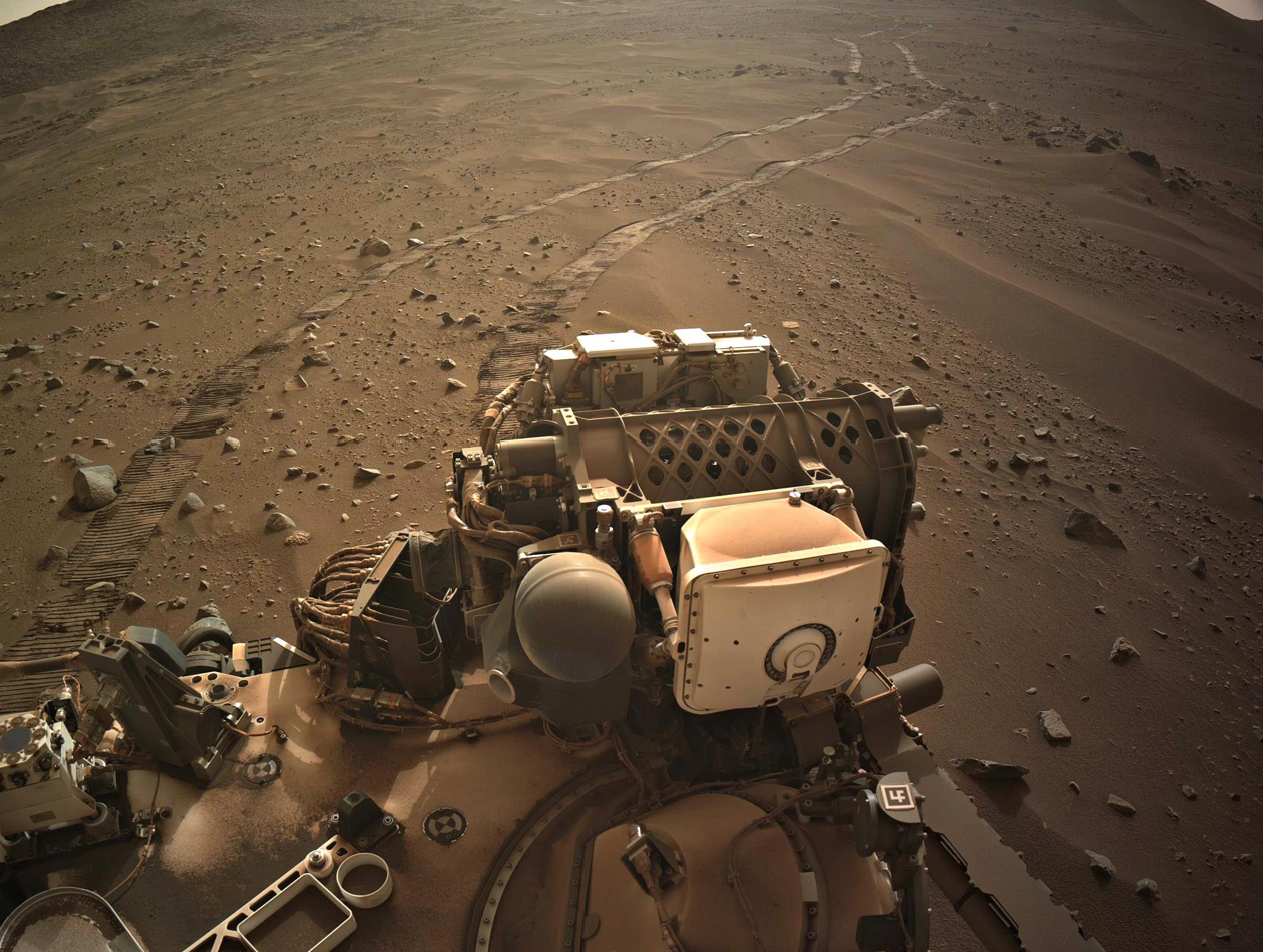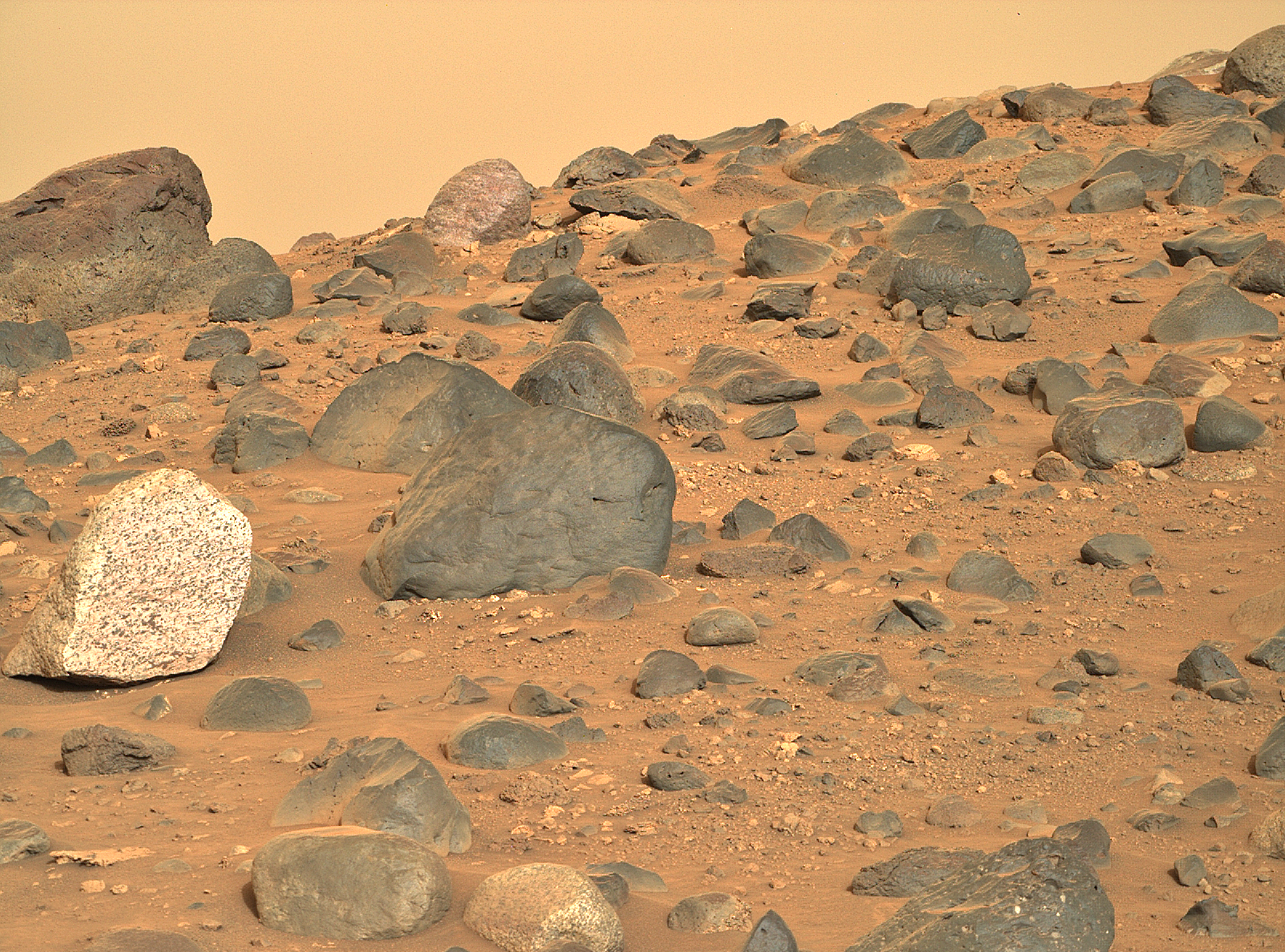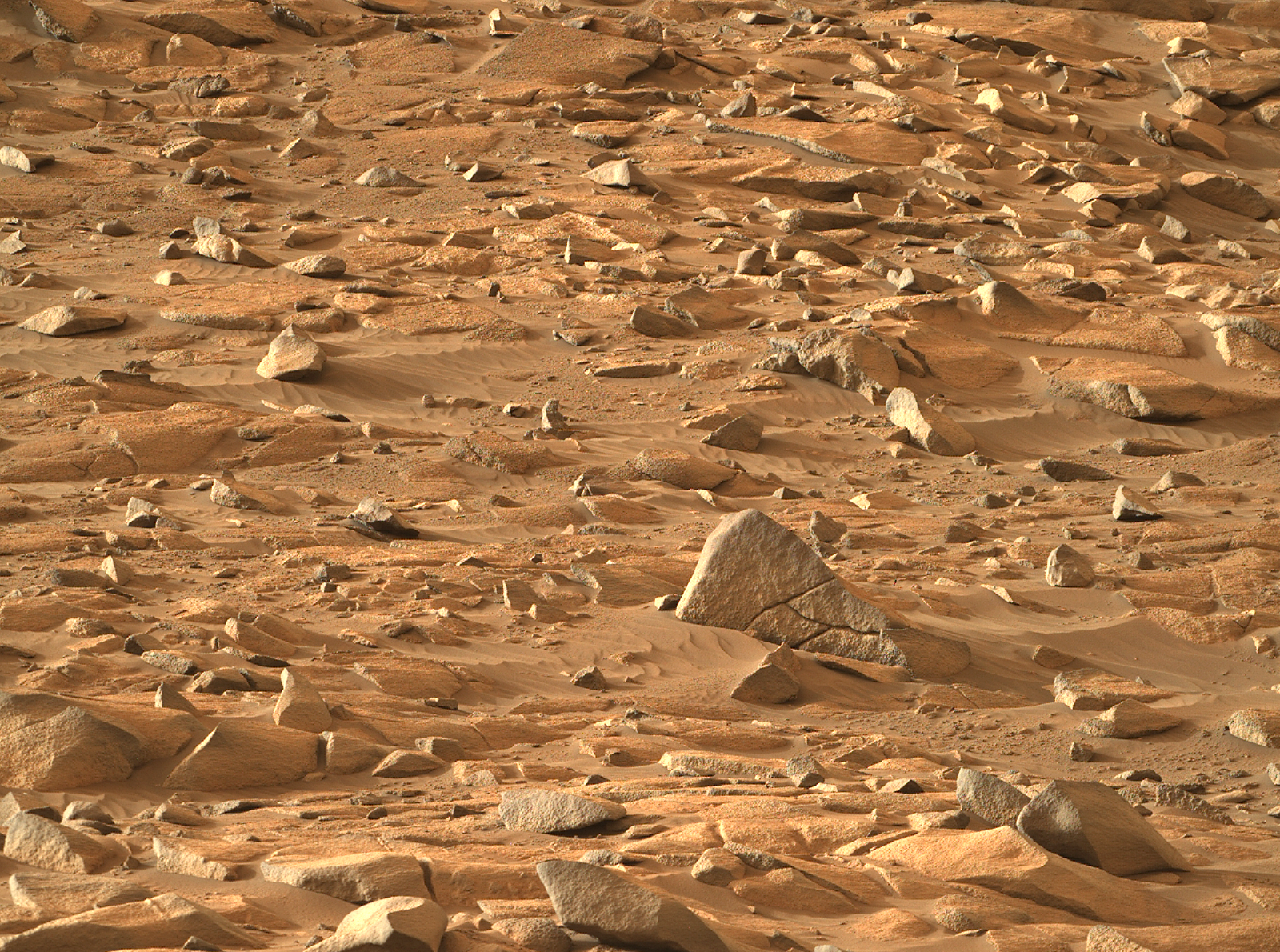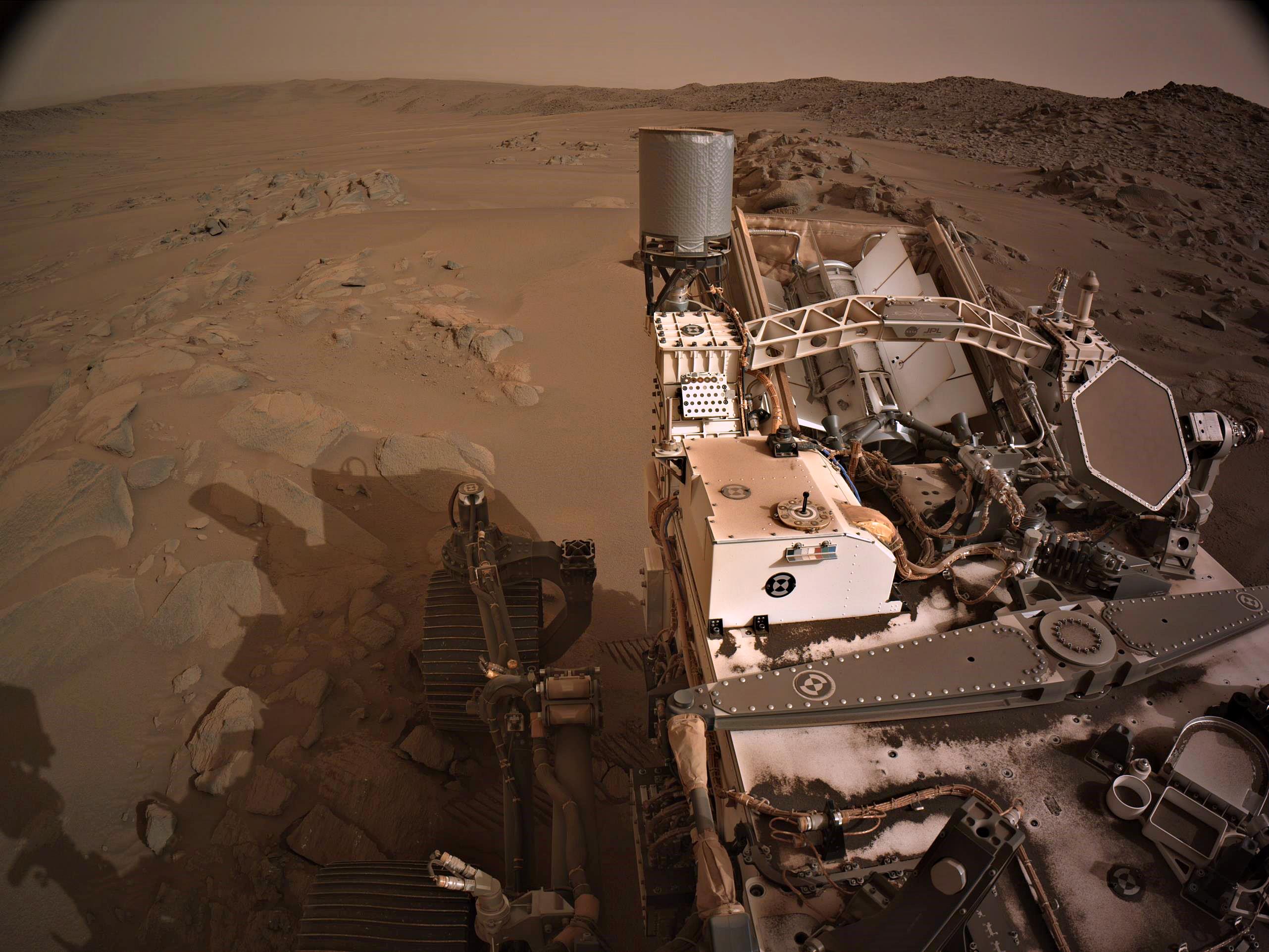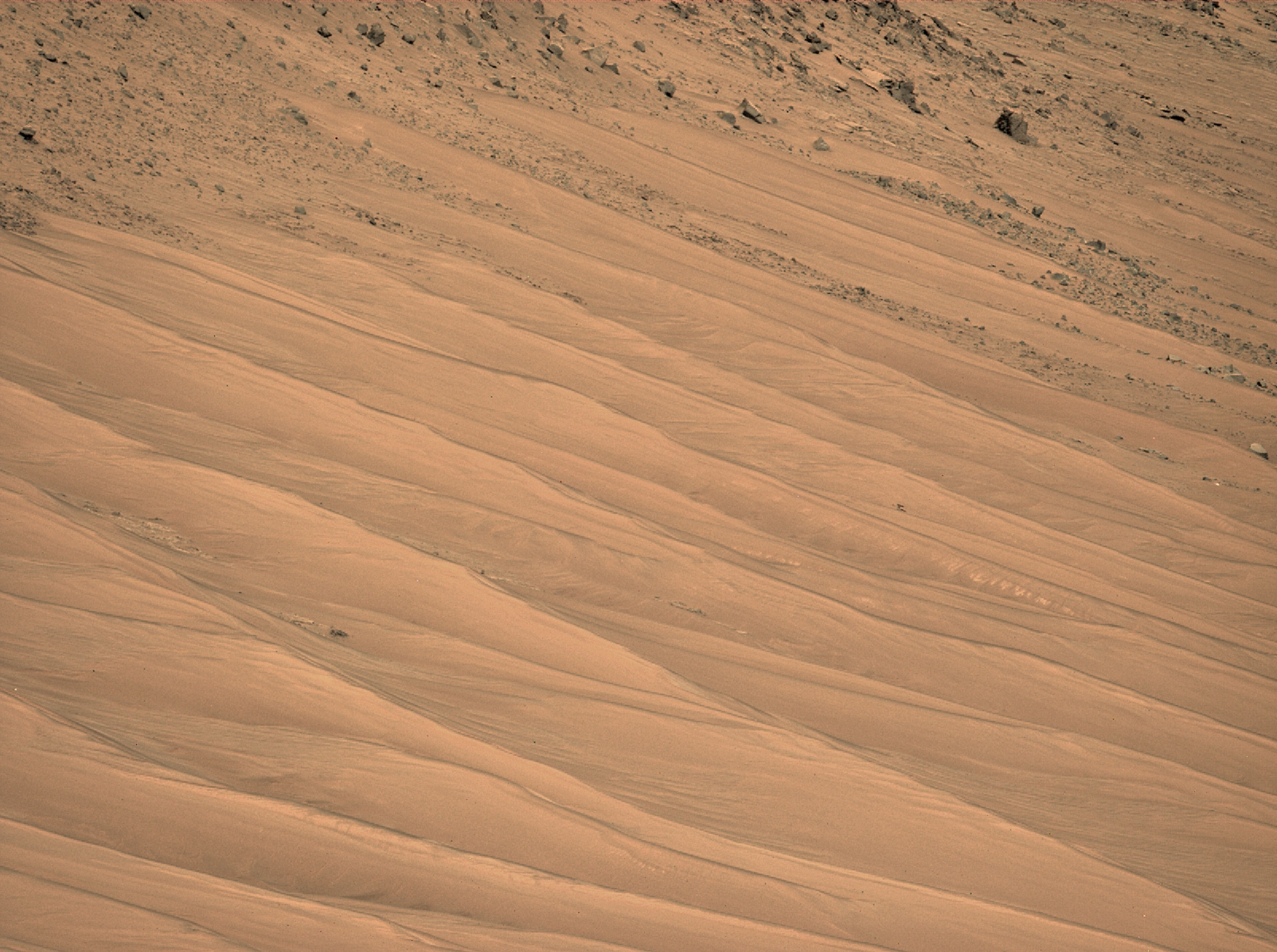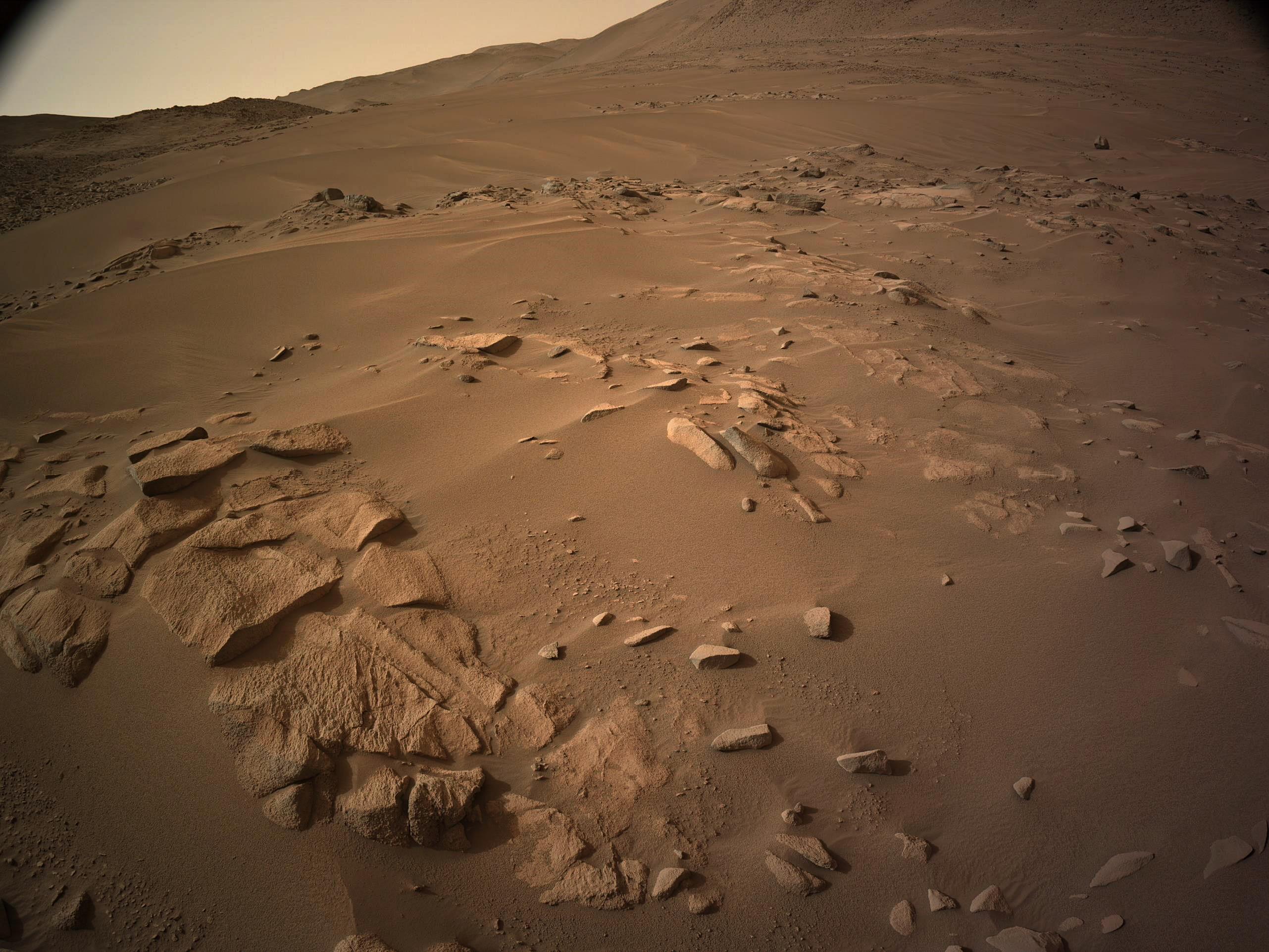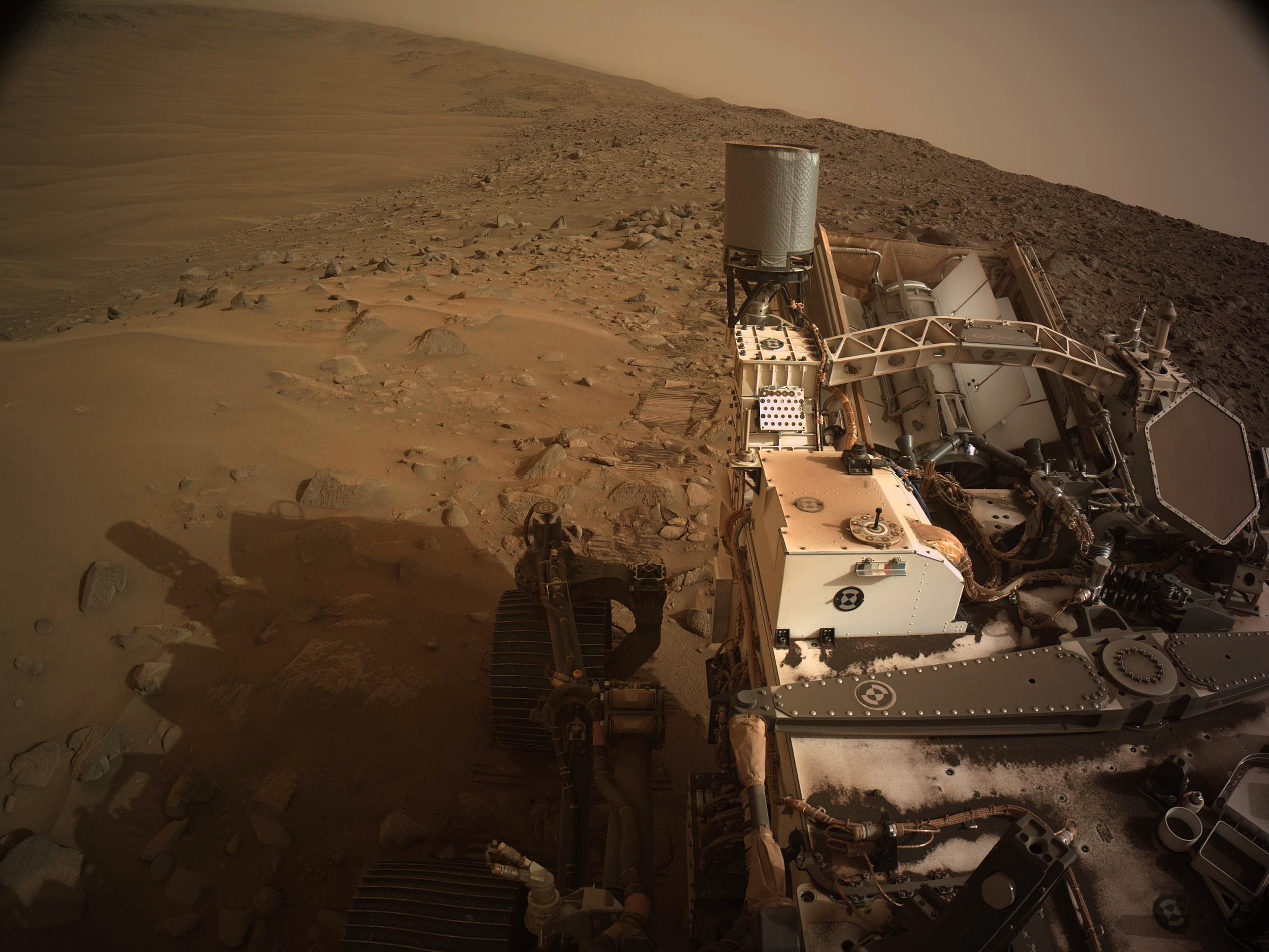Bright Rocks and “Bright Angel” - Perseverance Rover mission update, June 10, 2024.
Last week the Perseverance rover descended into Neretva Vallis, an ancient river channel that brought water into Jezero Crater billions of years ago. Rocks found in Neretva Vallis could have come from far upstream, giving us the opportunity to examine material which may have come from many kilometers away. Turning north into the channel has allowed us to complete longer drives, a refreshing change of pace from the rugged terrain we tackled in the Western Margin.
Dodging dunes at Dunraven Pass, we approached Mount Washburn, an outcrop which our Mastcam-Z camera identified from a distance as having spectrally diverse boulders and patches of lighter-toned bedrock. Upon arriving, we were amazed by the variety of colors and textures in the rocks around the rover and immediately got to work planning observations with our remote sensing instruments. Much of our focus was on “Atoko Point”, a bright boulder with dark speckles. After acquiring numerous Mastcam-Z multispectral images and zapping Atoko Point with our SuperCam laser, we began to look towards our next goal: “Bright Angel”. This exposure of light-toned rock, northwest of our current location, stands out vividly in orbital imagery. By examining outcrops at Bright Angel and assessing stratigraphic relationships (i.e. the vertical sequence and stacking of different sets of rocks), it is hoped that we can understand its connection to Neretva Vallis and the crater rim.
Intrigued by what we have found at Mount Washburn, our first stop in the channel, we have now turned to the terrain to the north, where we will add yet another chapter to Perseverance’s story at “Bright Angel”.
Written by Henry Manelski, PhD Student at Purdue University
Source (with all the links and the original raw image): https://science.nasa.gov/blogs/bright-rocks-and-bright-angel/
These blog updates are provided by self-selected Mars Science Laboratory mission team members who love to share what Curiosity is doing with the public.
Dates of planned rover activities described in these reports are subject to change due to a variety of factors related to the Martian environment, communication relays and rover status.
Image credits: NASA/JPL-Caltech (PH)
